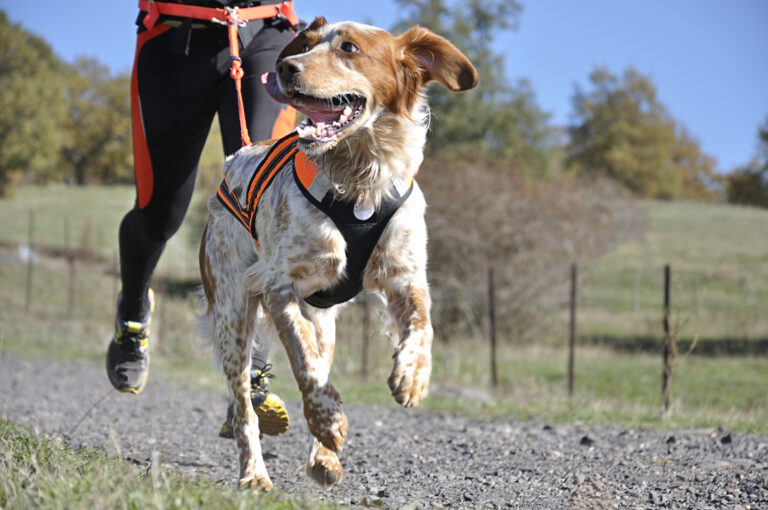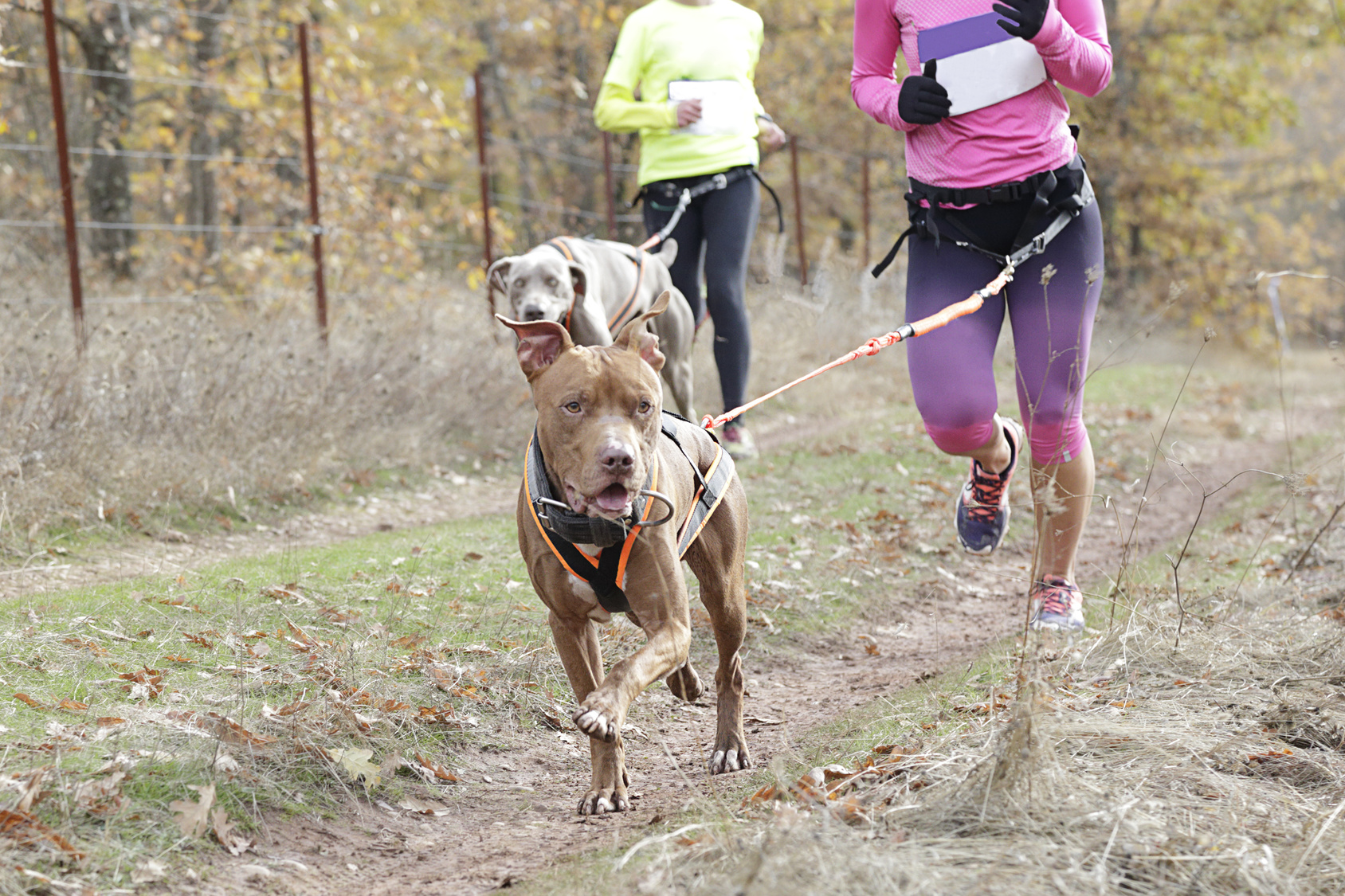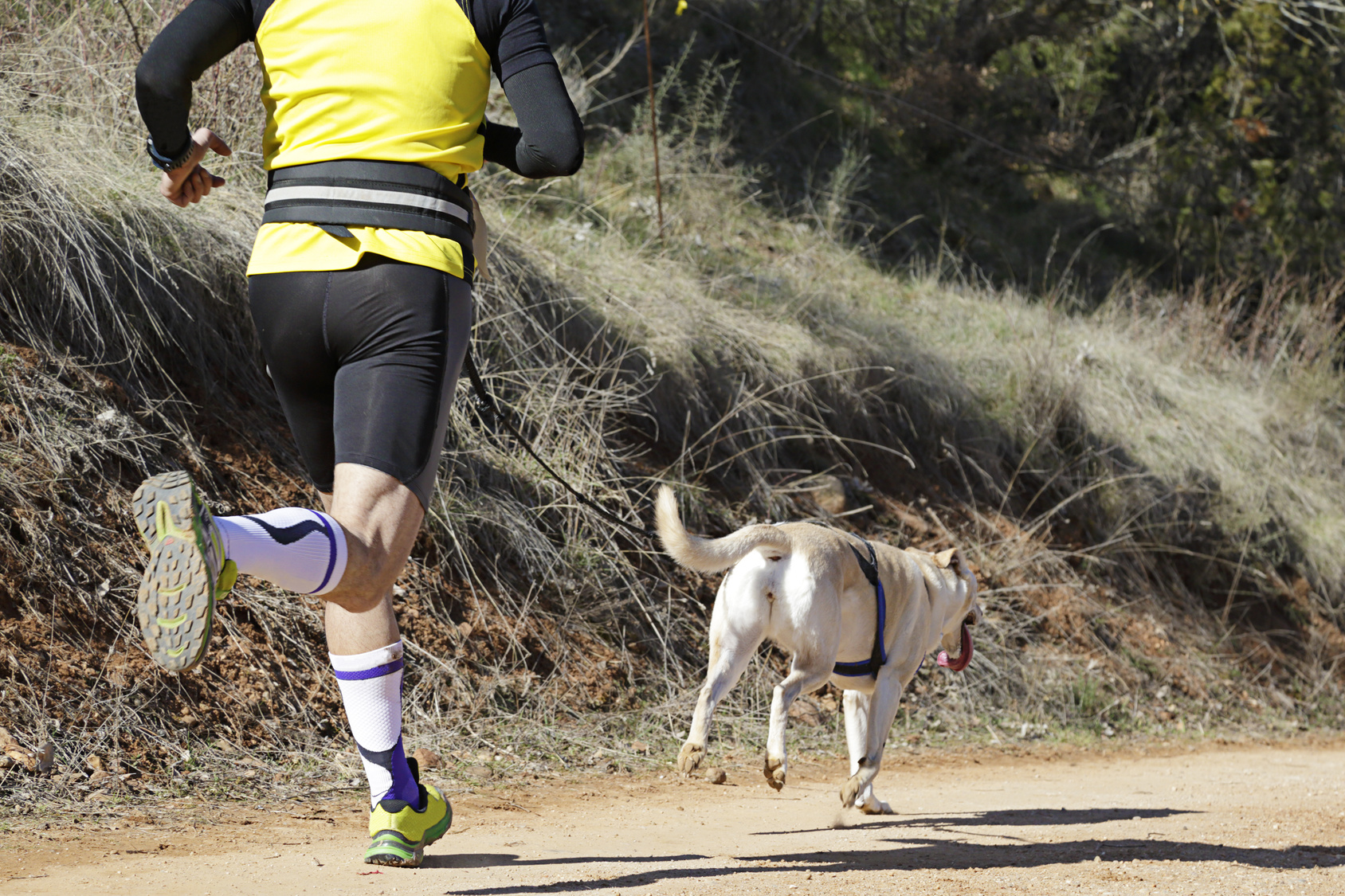Hiking with Dogs – Everyday Adventures
Be it short hikes in the surrounding area, day trips at the weekend or whole hiking holidays with your dog, hiking is a great hobby for human-canine teams!
Many dog lovers enjoy doing exercise together with their dog – off the beaten track too. For fit human-animal duos or those aspiring to this status, canicross is an ideal sport that allows them to enjoy nature together. It involves the dog pulling its human companion along the terrain with the help of a flexible lead. This doesn't just keep up fitness levels, but also strengthens basic obedience and the connection between human and animal, provided that it is practised responsibly.

© Raquel Pedrosa / stock.adobe.com
Canicross has its origins in skijoring, which involves sledge riders being pulled by a dog or horse. The first canicross competitions took place as early as the 1980s in France, where the sport of hauling dogs running with humans originated. Along with canicross and skijoring, the most widespread varieties, sporty duos can also let off steam with bikejoring. Dogs have their owner on a bike and connected to them with a 2.5m-long lead that acts as a tow. This type of sport is very popular in Belgium and the Netherlands in particular, with numerous events taking place in autumn. In other countries such as Germany, many dog owners and their four-legged companions are currently discovering the benefits of this sport for themselves.
 © Raquel Pedrosa / stock.adobe.com
© Raquel Pedrosa / stock.adobe.com
In principle, all dogs that love to run are suitable for canicross. However, you need to ensure that the weight ratio between the human and dog is balanced: a dainty greyhound will barely be able to pull a human weighing 100kg. Of course, sledge dogs are predestined for such tasks, though sporty Standard Poodles can also take great joy in cross-country running. Cross-country is mostly the order of the day, since canicross running is characterised by varied routes that are rarely straight and even. Grassland and forest soil are ideal for sensitive dog paws, though natural obstacles like roots and stones demand the team’s full concentration. When it comes to official races, orientation is simple and efficient, with a red sign to the left meaning “turn left” and to the right meaning “turn right”. Blue signs mark the correct path and yellow signs warn of danger areas. Avoid long tarmac roads that damage sensitive dog paws.
Along with good running shoes with a rough profile and the usual jogging equipment, you need a waist harness and a lead around 2 metres in length with front suspension for canicross. Shock absorption protects the spine of the human and dog. The waist harness should have a panic snap to minimise the risk of injury. A special canicross harness for your dog comparable to those for sledge dogs is also important. The pressure points are designed so the dog is not restricted when running and is able to breathe freely.
Dogs should be at least a year old to do canicross – then you can start training together. You surrender leadership of the dog with this type of sport and direct it with a few commands (“right”, “left”, pull”). Undesirable on normal walks, pulling is best taught to your dog with the help of a second person who entices it forwards and gives it a reward after it has pulled you. If the human cannot keep pace, the pull on the lead automatically strengthens and the dog gets slower.
 © Raquel Pedrosa / stock.adobe.com
© Raquel Pedrosa / stock.adobe.com
Of course, as a fellow runner you should also be well trained in order to keep the pace. You will presumably have sore muscles after the first few runs, because your speed with canicross can increase by up to 4km/h with your companion pulling you. It’s important that your dog doesn’t get distracted during canicross. Hauling or sledge dog associations can also give you good initial help with this type of sport and offer excellent advice regarding equipment too.
Before actually going running, it’s recommended to do a warm-up walk so your dog can do its business. At the start, you should train over distances of one to two kilometres without bumps so you both get used to running as a team and the pulling sensation. This also applies to dogs that are already sporty and able to run 10km at a time with you without any problems, since the challenges with canicross are different. After a few weeks you can increase the distance and give your dog extra training with little challenges such as a final sprint. Always run with foresight even with trained dogs and don’t overwhelm your pet: if you have a long distance ahead, drop your speed accordingly. Only train at a maximum of 18 degrees Celsius to prevent your dog from overheating. You should therefore do canicross sessions in the early hours of the morning or in the evenings during summer. As well, always make sure that your dog drinks enough. If you’re going downhill, it’s best for your sporting companion to run alongside or behind you, because it pulling could quickly lead to a fall.
Be it short hikes in the surrounding area, day trips at the weekend or whole hiking holidays with your dog, hiking is a great hobby for human-canine teams!
Cheap and yellow – tennis balls are popular dog toys. However, models designed for sports are unsuitable for four-legged friends and pose certain risks. Find out below why the classic tennis balls can be dangerous for dogs and which pet-friendly alternatives are available.
Only for big dogs? No way! Small dogs too can have plenty of fun with agility. Find out here whether your little dog is suited to this dynamic dog sport and which five factors you as a dog owner have to take into account.